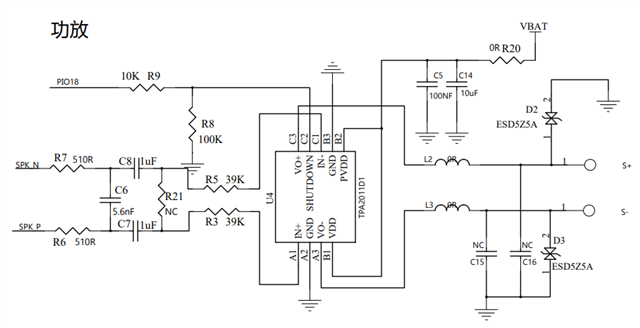Hi teachers,
Bluetooth headset to use TI TPA2011, products are sold, after coming in phenomenon of consumer complaints has a temperature the machine (currently burned are found in use process, is not charging status, and can confirm that both TPA2011 and bone oscillator), now faces the risk of product recall, please help analysis, what factors can lead to burning machine?
The following figure shows the application schematic diagram of TPA2011, wherein SPK_N and SPK_P are SPK output pins of Bluetooth chip, and the output of Bluetooth chip is Class D signal. In the figure, S+ and S- are welding points, and the positive and negative poles of the bone-conduction oscillator are welded.

My questions as following,
1. Which pins of TPA2011 chip are short-circuited, which will lead to hot and burning machine?
2. Under what abnormal conditions will TPA2011 lead to SPK output DC power supply? (Since this product uses bone-conduction oscillators, when DC power is loaded onto the oscillators, the oscillators will be hot rapidly)
3. The audio input of TPA2011 is a PWM carrier signal (class D) with 1MHz. Is it possible that this signal will cause damage to TPA2011? Or what is the signal strength that will cause TPA2011 to burn?

